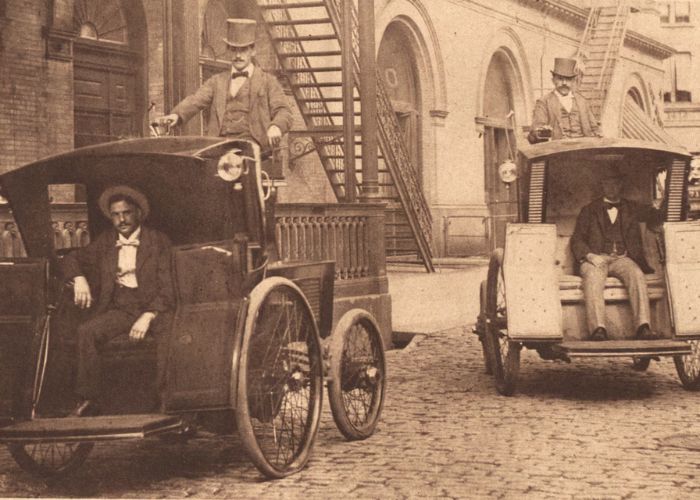In the bustling streets of 1890s New York City, a transportation revolution was quietly underway. As horse-drawn carriages clopped along the avenues, an innovative new vehicle began plying its trade – the Electrobat, one of the world’s first electric taxi cabs. Little remembered today, the battery-powered Electrobat fleet offered a glimpse of the future and helped pave the way for today’s electric vehicle boom.
The Electrobat was the brainchild of inventors Pedro Salom and Henry Morris. The two Philadelphia-based engineers spent years tinkering with battery power before launching the Electric Carriage and Wagon Company in 1896. Their Electrobat taxis featured rechargeable lead-acid batteries that powered motors on the rear axle. The cabs carried 1600 pounds of batteries on board, which provided a range of 25 miles per charge and a top speed of about 12 miles per hour. While primitive compared to today’s EVs, the Electrobats were cutting-edge in their day.

What made the Electrobat unique was Salom and Morris’ innovative battery swapping system. Rather than waiting hours to recharge, the Electrobat taxis would pull into a converted carriage house where hydraulic lifts would quickly swap out the 800-pound battery pack, allowing the cab to get back on the streets in minutes. This ingenious solution enabled each Electrobat to cover 100 miles per day. At their peak in 1899, over 100 Electrobat taxis operated in New York City, with smaller fleets launched in other major cities like Boston and Chicago.
The Electrobat became the favored ride of New York’s upper crust. The electric cabs were quieter, smoother, cleaner, and easier to operate than horse-drawn hansoms. Ladies appreciate not having their dresses soiled by equine “exhaust.” But this created an unexpected problem – pedestrians couldn’t hear the silent Electrobats coming. In fact, the first recorded automobile fatality occurred in 1899 when Henry Bliss was run down by an Electrobat after stepping off a streetcar.
Electrobats also made headlines for being the first cars used in a speeding arrest. In 1899, cab driver Jacob German was jailed for zooming down Lexington Avenue at the “breakneck pace” of 12 mph. The arresting officer had to chase down German on a bicycle. Clearly, the Electrobats were ahead of their time in more ways than one.
Sadly, the Electrobat taxis were short-lived. A series of scandals involving the Electric Vehicle Company, which had taken over Salom and Morris’ enterprise, caused the business to collapse by 1901. An economic downturn, competition from early gas-powered cars, and the limitations of contemporary battery technology all contributed to the Electrobat’s demise. The innovative cabs faded into oblivion as the internal combustion engine came to dominate.
But the Electrobat’s legacy lived on. It helped prove the potential of battery-powered vehicles for urban transportation. As we grapple with climate change and sustainability today, it’s fascinating to look back on the Electrobat as an early pioneer of the EV revolution currently sweeping the auto industry. In many ways, what’s old is new again. Just as in the 1890s, electric vehicles are now seen as the cleaner, quieter, more efficient transportation of tomorrow. Over 120 years later, the roads Electrobats once roamed are increasingly filled with their spiritual successors from the likes of Tesla, Nissan, and other EV makers.
While it may have been ahead of its time, the Electrobat stands as an important milestone on the long and winding road to electrified transportation. As major automakers pledge to go all-electric in the coming years, the world the Electrobat hinted at is finally on the horizon. When the next taxi you hail is a silent, zero-emission EV, tip your hat to those innovative cabbies of the 1890s. The Electrobat may be long gone, but its groundbreaking spirit lives on.